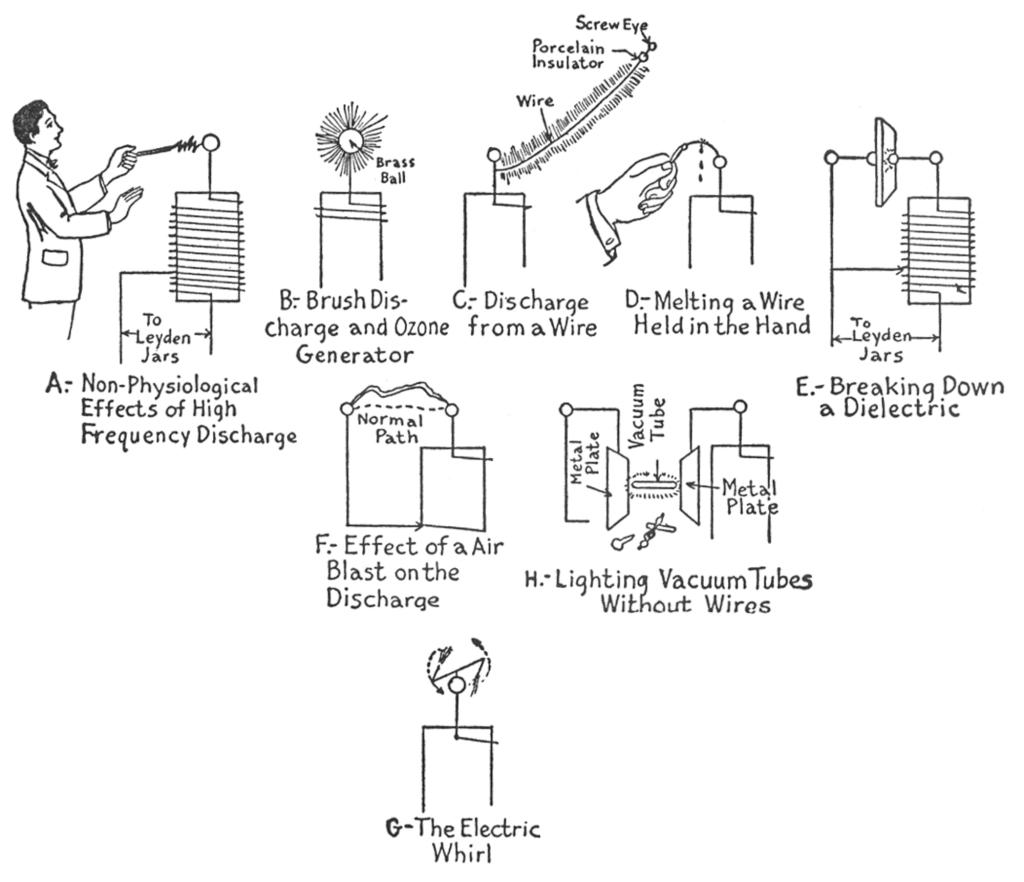TCBA Volume 14 - Issue 1
Page 16 of 18
(10) Grip one end of a piece of fine iron wire in a pair of pliers and hold the latter tight in your hand; then touch the other and free end of the wire to the discharge electrode of the coil, when the heat of the current flowing through it will melt the wire, but you will not feel any effects from it. The experiment is shown at D. (11) Form a spark gap between the discharge electrodes of the high frequency coil and place a sheet of glass between them, as at E, when the electrostatic stresses set up will puncture the glass.
(12) Set up the discharge between the two discharge electrodes, and pucker up your lips as if you were going to whistle, but instead blow a stream of air on the discharge, when you will observe that it has diverged out of its normal path, as shown at F. (13) Bend a piece of wire a couple of inches long into the shape of the letter Z; make a dent in the middle of it with a center punch and then pivot it on a needle point, which is fixed to the discharge electrode; the wire will whirl round like a static motor and take on the appearance of an electric pinwheel with sparks shooting in streams from the rotating points. (See G, 181.)
(14) Connect each discharge electrode with a sheet of copper, or zinc, about twelve inches on the sides; now place a Geissler tube between the sheets of metal, when it will glow without any direct connection between them, due to the electrostatic field that is set up. The arrangement is shown at H.

